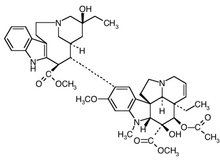INTRODUCTION: Pulmonary hypertension is a known complication of sarcoidosis; however pulmonary hypertension in patients with sarcoid-like reactions has not been described. We report a case of a patient with pulmonary arterial hypertension associated with a sarcoid-like reaction and Hodgkin's disease.
CASE PRESENTATION: 48 year-old Caucasian female presented with progressive dyspnea on exertion for three years, markedly worse over last six months. ACT scan one year prior revealed diffuse mediastinal lymphadenopathy. A mediastinoscopy with lymph node biopsy showed granulomas and diagnosis of sarcoid was made at that time. Symptoms continued to worsen despite treatment with prednisone. Past medical history was also significant for hypothyroidism and fibromyalgia. She smoked 40 pack-years. Review of symptoms revealed arthralgias, Raynand's phenomena, night sweats, and a 25-pound weight loss over six months. Cardiovascular exam revealed a normal S1, S2 with loud pulmonic component, S3 present. A II/VI systolic murmur appreciated over left sternal boarder. Pulmonary function testing showed mild restrictive disease TLC 3.52 (72% predicted) with markedly reduced diffusion capacity DLCO 6.2 (27%). During six-minute walk she traveled 1033 feet desaturating to 82% on six L/min oxygen. Computerized tomography showed enlarged pulmonary vasculature and extensive lymphadenopathy. Right heart catheterization revealed: pulmonary artery pressure 79/38 mmHG (mean 46 mmHG) cardiac output 6.7 L/min, cardiac index 3.7 L/min/m2. There was no significant response to inhaled nitric oxide at 20ppm. Review of previous lymph node biopsy showed a sarcoid-like-granulomatous lymphadenitis with foci of Reed Sternberg cells, a diagnosis of stage IIB mixed cellularity Hodgkin's lymphoma was made. She was initiated on epoprostenol therapy by continuous infusion and underwent 6 cycles of vinblastine, chlorambucil, procarbazine, and prednisone. She is in remission 20 months post chemotherapy without reoccurrence of lymphadenopathy off steroids. She failed attempts to wean epoprostenol therapy, but displays improved exercise tolerance on epoprostenol, 1355 feet on six minute walk desaturating to 88% on room air. Repeat right heart catheterization showed: pulmonary artery pressure 48/21 (mean 30 mmHG), cardiac output 7.8 L/min, cardiac index 4.6 L/min/m2.
DISCUSSIONS: Sarcoid-Like reactions are defined as areas of noncaseating granulomas seen on biopsy in patients without symptoms of systemic sarcoidosis. Radiographically, patients with sarcoid-like reactions may present with hilar or mediastinal adenopathy, ground-glass infiltrates, or perivascular nodularity. Sarcoid-like reactions in malignancy may occur at the primary tumor site, in lymph nodes draining the region, or in distant organs such as the spleen, Liver, or bone marrow in up to 4.4% of patients with carcinoma, 7.3% patients with non-Hodgkin's lymphoma, and 13.8% patients with Hodgkin's disease. Pulmonary arterial hypertension (PAH) develops in up to 28% of patients with sarcoidosis. The etiology of PAH in sarcoidosis is generally presumed to be secondary to parenchymal fibrosis and destruction of small vessels or granulomatous inflammation of the vessels. The response of PAH to treatment for sarcoidosis is uncertain, in case series, the hemadynamic response to steroid therapy lagged behind the radiographic and PFT improvement, and was not universal. In a small study, patients with severe PAH secondary to sarcoidosis were responsive to vasodilator therapy. PAH in association with sarcoid-Like reactions is not described and management is unproven.
CONCLUSION: This case underscores the association of lymphoma and sarcoid-like reactions and the possibility that PAH in these patients may be underappreciated. It also highlights the importance of a systematic evaluation for lymphoproliferative disease in patients with lymphadenopathy presumed to be sarcoidosis.
DISCLOSURE: Matthew Exline, None.
REFERENCES:
(1) Brincker H. Sarcoid reactions and sarcoidosis in Hodgkin's disease and other malignant lymphomata. Br J Cancer 1972; 26(2):120-123.
(2) Preston IR, et al. Vasoresponsiveness of sarcoidosis-associated pulmonary hypertension. Chest 2001; 120(3):866-872.
(3) Ghiskowski J, et al. Effects of corticosteroid treatment on pulmonary haemodynamics in patients with sarcoidosis. Eur Respir J 1990; 3(4):403-407.
Matthew C. Exline MD * Namita Sood MD The Ohio State University, Columbus, OH
COPYRIGHT 2005 American College of Chest Physicians
COPYRIGHT 2005 Gale Group



